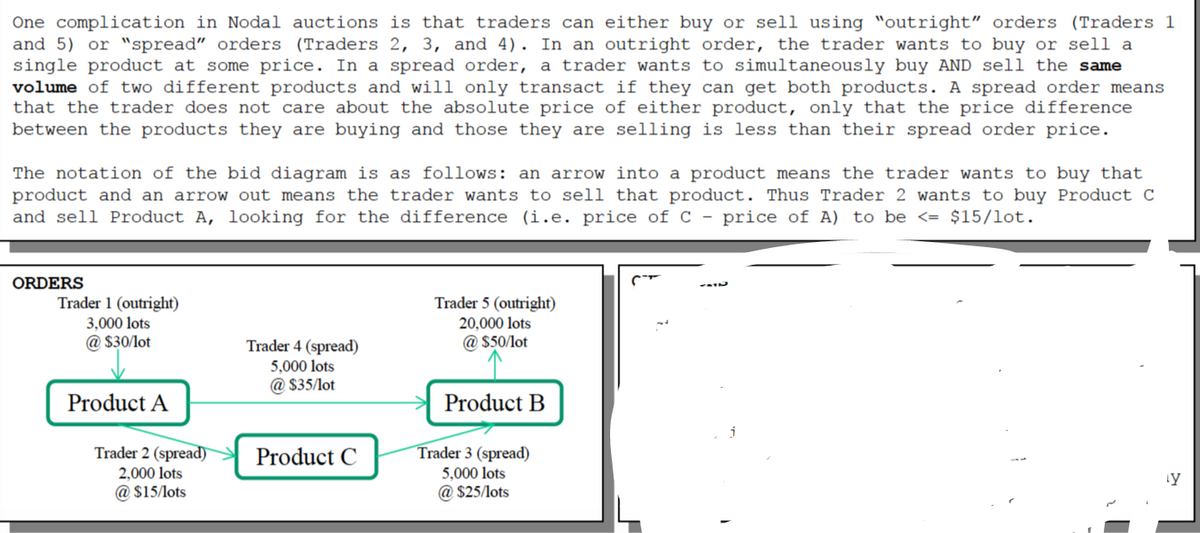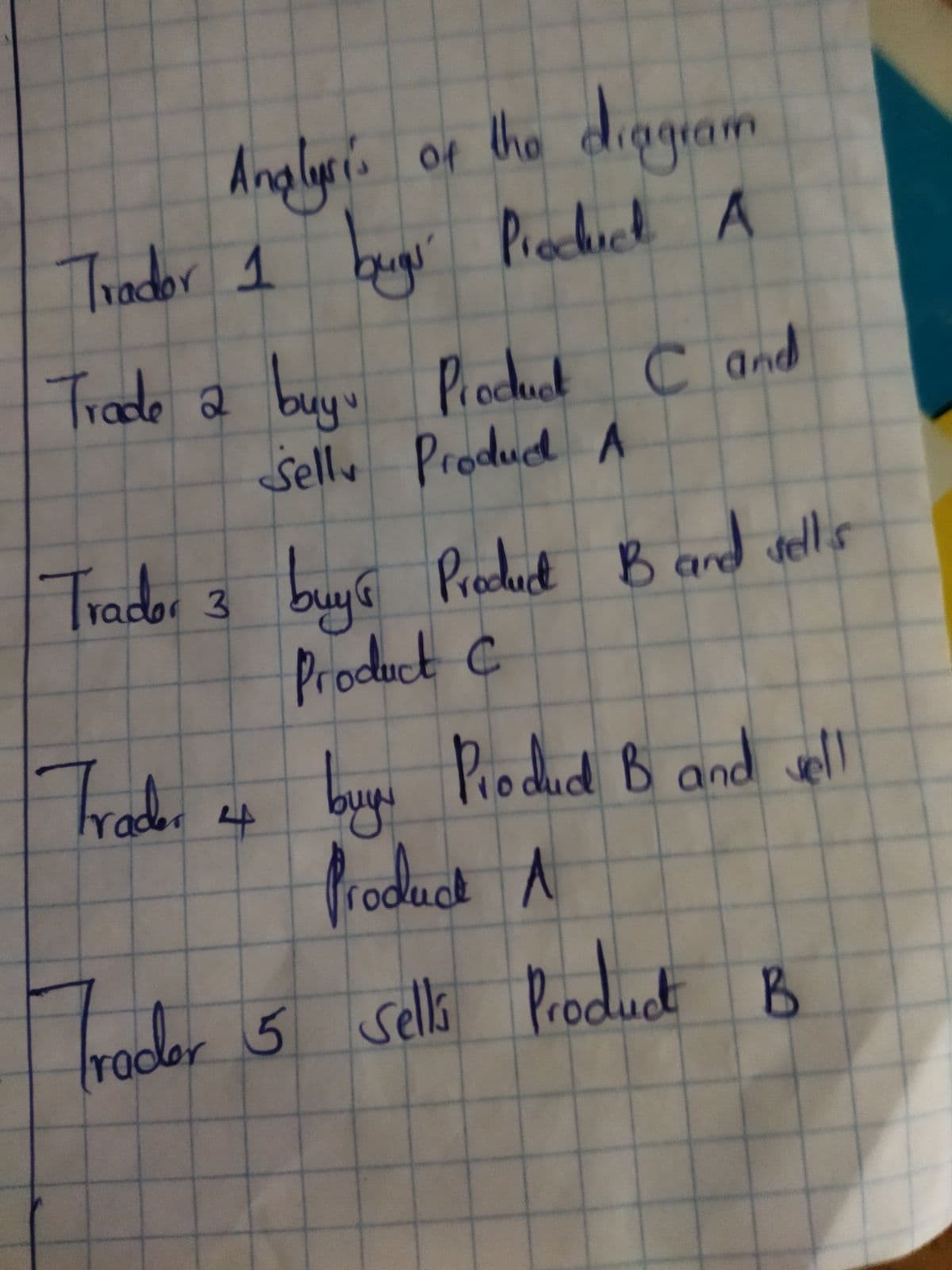Managerial Economics: A Problem Solving Approach
5th Edition
ISBN:9781337106665
Author:Luke M. Froeb, Brian T. McCann, Michael R. Ward, Mike Shor
Publisher:Luke M. Froeb, Brian T. McCann, Michael R. Ward, Mike Shor
Chapter18: Auctions
Section: Chapter Questions
Problem 9MC
Related questions
Question
a) which trader get filled and for what volume
b)what will be the market
c) Determine economic surplus for each trader

Transcribed Image Text:One complication in Nodal auctions is that traders can either buy or sell using "outright" orders (Traders 1
and 5) or "spread" orders (Traders 2, 3, and 4). In an outright order, the trader wants to buy or sell a
single product at some price. In a spread order, a trader wants to simultaneously buy AND sell the same
volume of two different products and will only transact if they can get both products. A spread order means
that the trader does not care about the absolute price of either product, only that the price difference
between the products they are buying and those they are selling is less than their spread order price.
The notation of the bid diagram is as follows: an arrow into a product means the trader wants to buy that
product and an arrow out means the trader wants to sell that product. Thus Trader 2 wants to buy Product C
and sell Product A, looking for the difference (i.e. price of C - price of A) to be <= $15/lot.
ORDERS
Trader 1 (outright)
3,000 lots
Trader 5 (outright)
20,000 lots
@ $50/lot
@ $30/lot
Trader 4 (spread)
5,000 lots
@ $35/lot
Product A
Product B
Trader 2 (spread)
Product C
Trader 3 (spread)
5,000 lots
@ $25/lots
2,000 lots
@ $15/lots

Transcribed Image Text:Anglyr's or the diggram
Thador 1 buge Piechuck A
Trado a buyu Piochuck C and
selly ProdudA
Producd
Trador 3 buye Preduct B and vello
Product C
B and del
Trado
bun Piodud B and vel
froduck A
roder 5 sello Product R
Expert Solution
This question has been solved!
Explore an expertly crafted, step-by-step solution for a thorough understanding of key concepts.
Step by step
Solved in 5 steps with 58 images

Knowledge Booster
Learn more about
Need a deep-dive on the concept behind this application? Look no further. Learn more about this topic, economics and related others by exploring similar questions and additional content below.Recommended textbooks for you

Managerial Economics: A Problem Solving Approach
Economics
ISBN:
9781337106665
Author:
Luke M. Froeb, Brian T. McCann, Michael R. Ward, Mike Shor
Publisher:
Cengage Learning

Managerial Economics: A Problem Solving Approach
Economics
ISBN:
9781337106665
Author:
Luke M. Froeb, Brian T. McCann, Michael R. Ward, Mike Shor
Publisher:
Cengage Learning